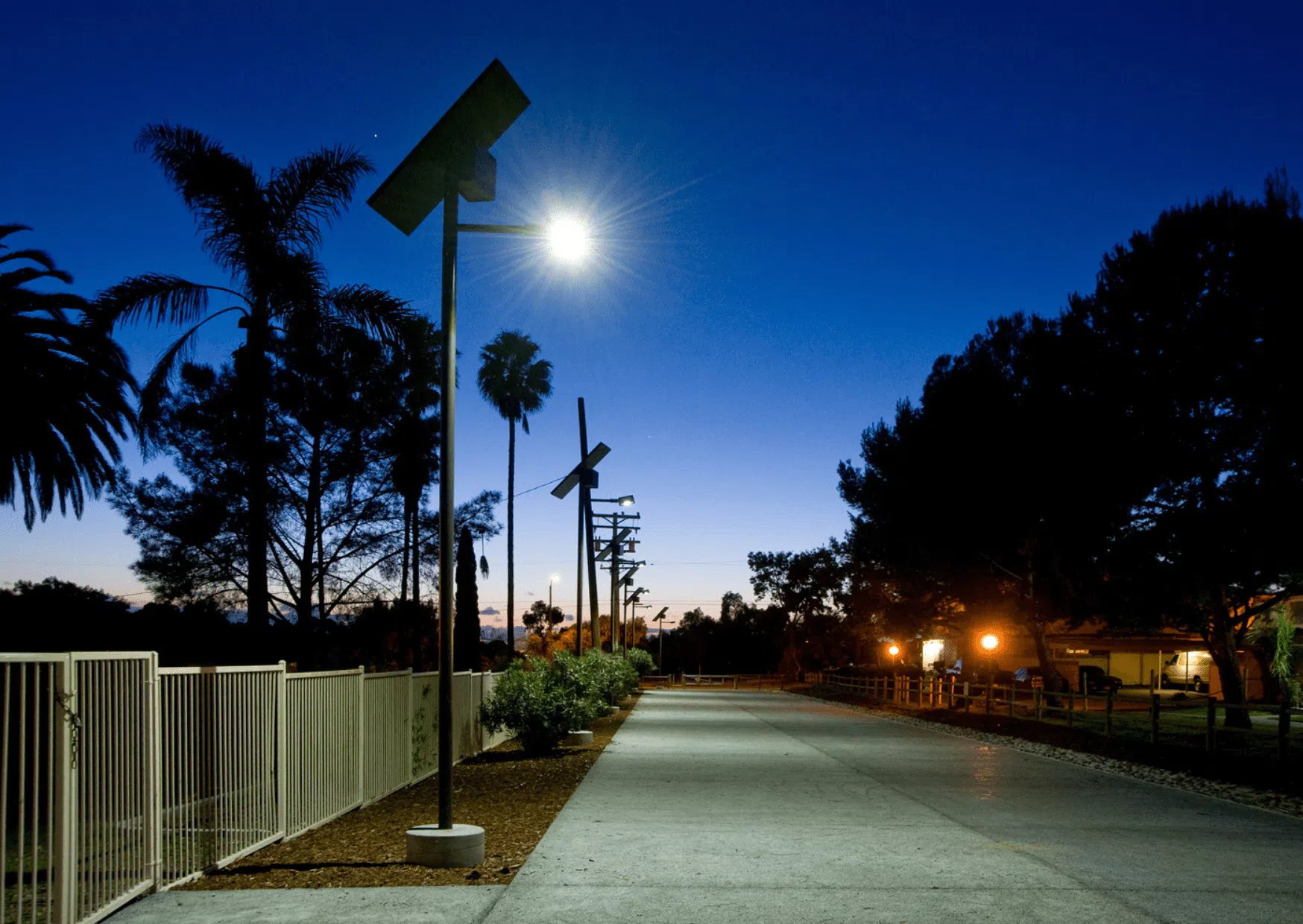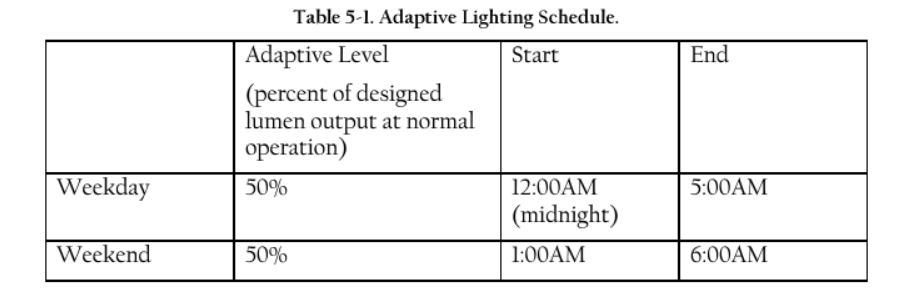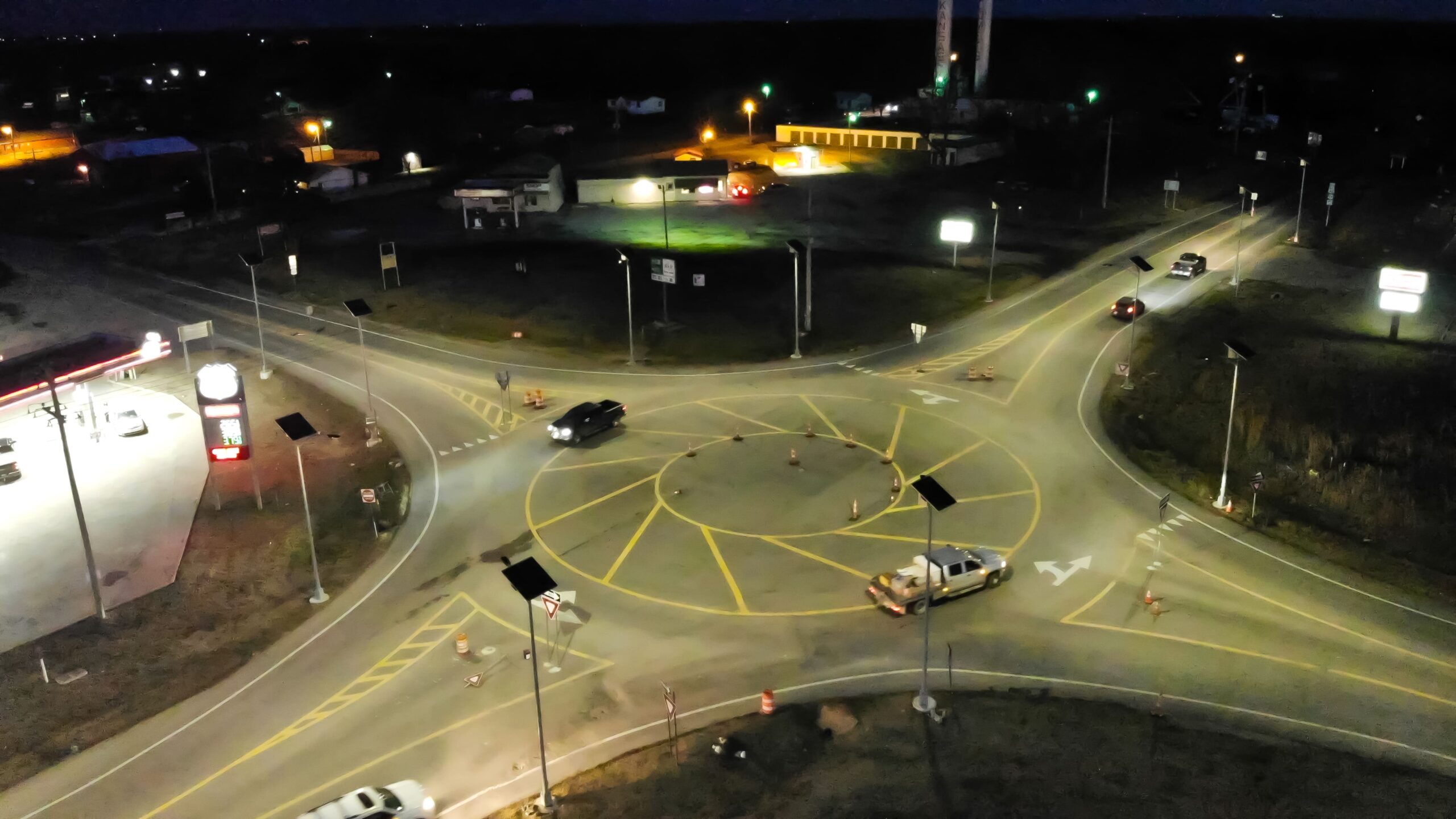Â
Â
Outdoor lighting has long been recognized for its safety benefits. On roads, it reduces the risk of accidents. In neighborhoods, it deters criminal activity. In parks and public areas, it encourages community engagement, making these spaces more inviting and secure after dark.
Â
While many agree that well-lit environments are safer, the concept of adaptive lighting challenges the idea that more light is always better. As the Federal Highway Administration (FHWA) states, “Lighting should be used only when necessary and at the appropriate level to ensure safety.†This approach involves adjusting light levels based on real-time conditions like traffic or pedestrian movement.
Â
For agencies that have traditionally relied on constant illumination, this may seem counterintuitive. However, adaptive lighting isn’t a new idea—it’s backed by updated guidelines from the Illuminating Engineering Society (ANSI/IES-RP-8-22), which now provide strong support for its implementation.
Â
What is Adaptive Lighting?
Adaptive lighting is different from traditional systems like timers or photocells. Instead, it uses smart control systems—either centralized or integrated into individual lights—to adjust brightness in response to environmental changes. These can include shifts in traffic volume, weather conditions, or pedestrian activity.
For example, residential streets often see peak activity in the early evening, with fewer people later at night. Retail areas mirror business hours. With adaptive lighting, light levels can be adjusted accordingly, providing sufficient illumination when needed and reducing it when not.
Â
Example lighting schedule from the City of San Jose’s Streetlight Design Guide. The city was one of the first to adopt adaptive lighting as a standard practice.
Â
Why Consider Adaptive Lighting?
Traditional lighting systems consume a lot of energy, especially in high-use areas. Adaptive lighting offers a more efficient alternative, helping reduce energy use and utility costs. For solar-powered systems, this means smaller, lighter, and more cost-effective setups.
Lower energy demand also allows solar lighting to work in regions with less sunlight, such as northern states. By dimming lights during low-activity periods, solar systems can still operate effectively even in winter months.
Additionally, adaptive lighting helps reduce light pollution, which can disrupt natural light patterns for both humans and wildlife. It aligns with the IES’ Five Principles for Responsible Outdoor Lighting, promoting controlled, low-level illumination where needed.
Â
Where and How to Implement Adaptive Lighting
The latest IES guidelines (RP-8-22) offer recommendations on where and how to implement adaptive lighting. They consider factors like road classification and pedestrian activity levels. For instance, local roads with lower foot traffic may benefit from reduced lighting after certain hours.
Many cities, including San Jose, have already adopted these guidelines. Municipalities and utilities are increasingly using them to update their lighting strategies and address liability concerns.
However, there are situations where adaptive lighting isn’t suitable. These include signalized intersections, midblock crosswalks, roundabouts, and high-speed highways, where consistent lighting is critical for safety.
Â
Figure 4: Adaptive lighting is not recommended for roundabouts or other high-risk areas. Sol’s EverGen lights provide reliable solar-powered illumination for dusk-to-dawn use.
Â
Alternatives to Adaptive Lighting
For areas where adaptive lighting isn’t practical, motion detection is a viable alternative. Sensors can activate lights when movement is detected, ensuring safety without unnecessary energy use. This is especially useful in parking lots, industrial zones, and campus walkways.
Motion detection can enhance security while still saving energy. If full illumination is required, Sol’s systems are designed to deliver reliable performance, whether for a busy roundabout or a multi-use path.
Â
Ready to Make the Switch?
With updated guidelines and growing acceptance, adaptive lighting is becoming a preferred choice for many municipalities. Cities like San Jose have already implemented these practices, and federal programs now recognize it as an eligible investment.
This shift opens up new opportunities for solar lighting providers to bring efficient, affordable solutions to a wider range of locations. If you're interested in learning more about adaptive lighting or want to explore its potential for your project, feel free to reach out.
Â
Jig Bushings,Cnc Brass Machining Parts,Aviation Parts,Cnc Machining Screw With Solt
JING SUNG Precision CO., , https://www.jingsungcnc.com


